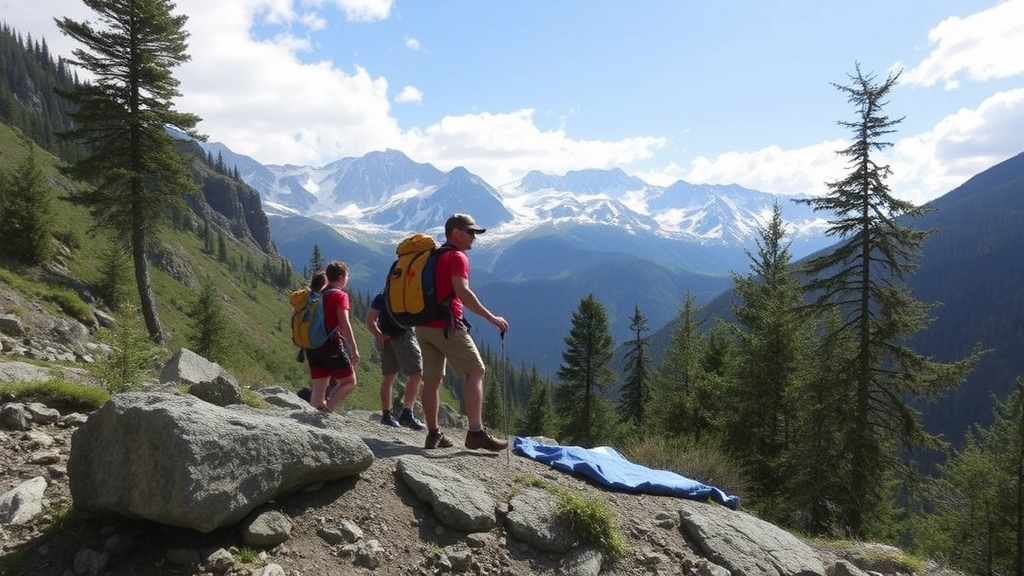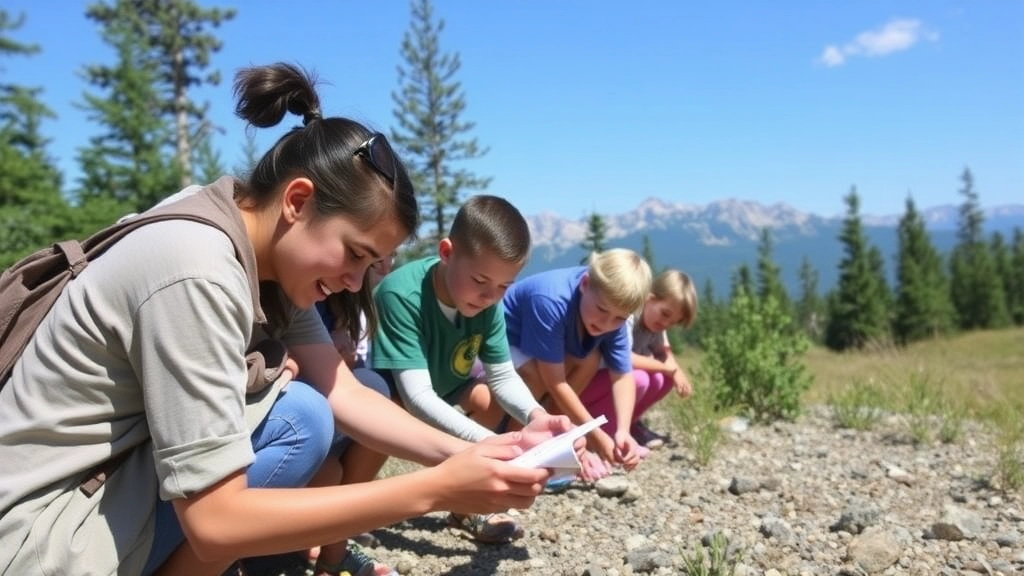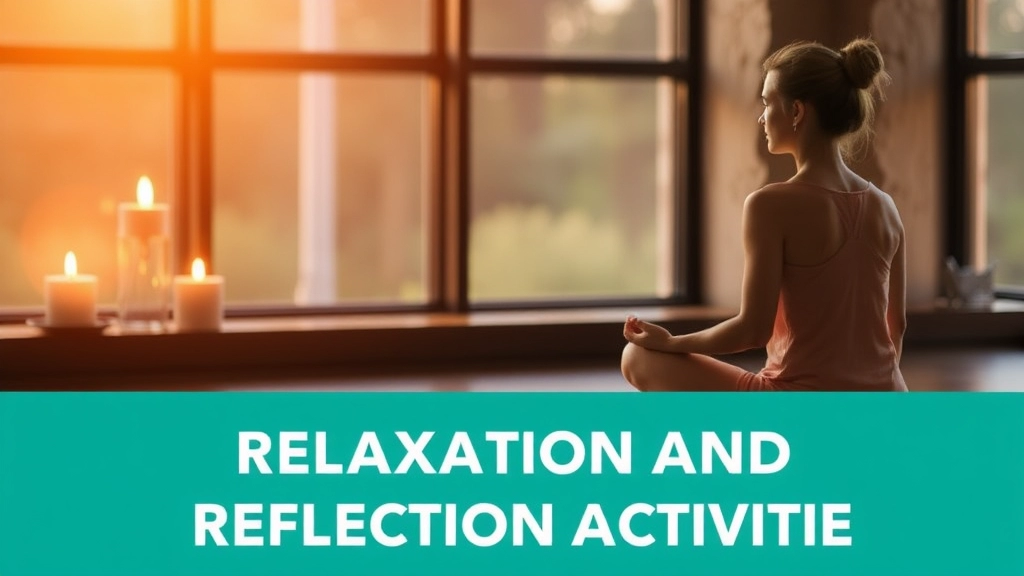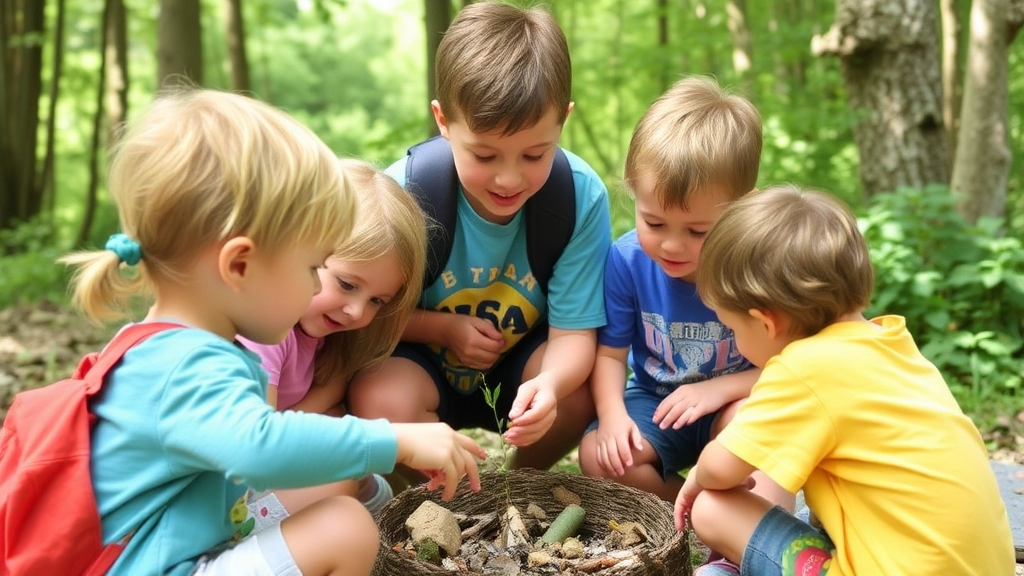Summer Camp Experience
Ever find yourself yearning for a summer camp experience that goes beyond the usual? One that immerses you in nature, challenges your physical limits, and sparks your creativity? This article dives into the diverse and enriching activities that summer camps offer, from nature exploration and wildlife observation to adventure sports, creative arts, and environmental conservation. Whether you’re an outdoor enthusiast or someone looking to unwind and reflect, there’s something here for everyone.
Activities to Explore
We’ll explore the thrill of hiking, rock climbing, and kayaking, delve into the art of nature crafts, and highlight the importance of environmental education. You’ll also discover practical survival skills, relaxation techniques, and interactive games that foster teamwork and community.
Make the Most of Your Experience
So, if you’re ready to make the most of your summer camp experience, keep reading to find out how you can connect with nature, learn new skills, and create lasting memories.
Nature Exploration and Wildlife Observation
Ever wondered how to truly connect with nature? Want to get up close and personal with wildlife without disturbing them? Yeah, me too. It’s a common worry, right? How do you explore nature responsibly while still getting that exhilarating experience?
The Thrill of Nature Exploration
Nature exploration is all about immersing yourself in the great outdoors. It’s about stepping out of your comfort zone and discovering the wonders that nature has to offer. Whether it’s hiking through dense forests, walking along serene beaches, or climbing rugged mountains, each step brings a new adventure.
Why Should You Explore Nature?
- Mental Clarity: Nature has a way of clearing your mind. The fresh air, the sounds of birds chirping, and the rustling leaves can help reduce stress and anxiety.
- Physical Health: Walking, hiking, and climbing are excellent forms of exercise. They improve your cardiovascular health and build muscle strength.
- Connection with the Environment: Exploring nature helps you appreciate the beauty and complexity of our environment. It fosters a sense of responsibility to protect it.
Wildlife Observation: Getting Up Close and Personal
Wildlife observation is another fantastic way to connect with nature. But, how do you do it without disturbing the animals? Here are some tips:
Tips for Responsible Wildlife Observation
- Keep Your Distance: Use binoculars or a zoom lens to observe animals from afar. Getting too close can stress them out.
- Stay Quiet: Loud noises can scare animals away. Move slowly and speak softly.
- Avoid Feeding Wildlife: It’s tempting to feed cute animals, but it can harm their health and disrupt their natural behaviours.
- Stick to the Trails: Wandering off the path can damage habitats. Stick to designated trails to minimize your impact.
- Use a Field Guide: A field guide can help you identify different species and learn about their behaviours.
Real Stories from the Wild
Let me share a quick story. Last summer, I was hiking in the Lake District. I came across a family of red squirrels. Instead of rushing to get a closer look, I stayed back, used my binoculars, and watched them for a good 20 minutes. It was fascinating to see them interact, completely unaware of my presence. That’s the magic of responsible wildlife observation.
Gear Up for Your Adventure
Before you head out, make sure you have the right gear. Here’s a quick checklist:
- Binoculars: Essential for bird watching and spotting distant wildlife.
- Camera with Zoom Lens: Capture stunning photos without getting too close.
- Field Guide: Handy for identifying plants and animals.
- Comfortable Footwear: Hiking boots or sturdy trainers are a must.
- Backpack: Carry water, snacks, and a first-aid kit.
For more tips on preparing for outdoor adventures, check out our 1-week summer camp packing list essentials and if you’re interested in activities to do with kids, don’t miss our guide on busy toddler summer camp fun activities at home.
Adventure and Physical Activities

Ever wondered how to get your heart racing while soaking in the great outdoors?
Let’s dive into some killer adventure and physical activities.
Hiking and Trekking
Why hike?
- It’s simple.
- It’s effective.
- It’s a full-body workout.
Ever hit a trail and felt that rush of fresh air and freedom?
That’s what we’re talking about.
Rock Climbing
What’s the deal?
- Builds serious strength.
- Tests your mental grit.
- Offers killer views from the top.
Ever tried scaling a rock face and felt like a total legend?
It’s not just for pros. There are routes for everyone.
Kayaking and Canoeing
Next, let’s talk water.
Kayaking and canoeing:
- Great for upper body workout.
- Perfect for those who love water.
- Offers a unique perspective on nature.
Ever paddled through a calm lake or a rushing river?
It’s pure zen.
Mountain Biking
How about mountain biking?
Benefits:
- High adrenaline.
- Fantastic leg workout.
- Lets you cover more ground.
Ever bombed down a trail and felt the wind in your face?
It’s freedom on two wheels.
Zip Lining
Ever wanted to fly?
Zip lining:
- Pure adrenaline.
- Amazing views.
- Safe and fun.
Ever zipped through the trees and felt like a bird?
It’s a must-try.
Trail Running
Love running but bored of the pavement?
Trail running:
- Engages more muscles.
- Less impact on joints.
- Surrounded by nature.
Ever hit the trails and felt that runner’s high?
It’s a game-changer.
Paddle Boarding
Finally, paddle boarding.
Why try it?
- Great core workout.
- Easy to learn.
- Super relaxing.
Ever stood on a board, gliding over water?
It’s like walking on water.
Creative Arts and Nature Crafts
Ever find yourself wondering how to keep the kids entertained while also connecting them with nature? Or maybe you’re just looking for a fresh way to unwind and tap into your creative side. Creative arts and nature crafts are the perfect solution. Trust me, there’s something magical about blending creativity with the great outdoors.
Why Nature Crafts?
Let’s face it, we live in a digital world. Screens are everywhere, and sometimes it’s tough to break away. But think about this: What if you could use the natural world to inspire creativity and bring a sense of calm? Nature crafts do just that. They let you:
- Disconnect from technology: Put down the phone, step away from the computer.
- Engage with your surroundings: Notice the colours, textures, and smells around you.
- Create unique, personal art: No two nature crafts are the same.
Simple Nature Craft Ideas
Worried about not being “artistic” enough? Forget that. Nature crafts are for everyone, and they’re incredibly easy to start. Here are a few ideas to get you going:
- Leaf Rubbings:
- Grab some paper and crayons.
- Find interesting leaves.
- Place the leaf under the paper and rub the crayon over it.
- Rock Painting:
- Collect smooth stones.
- Use acrylic paint to create designs or little characters.
- Seal with a clear varnish to make them last.
- Nature Collages:
- Gather leaves, flowers, twigs, and other natural items.
- Glue them onto a piece of cardboard or paper.
- Create patterns or scenes.
- Pinecone Bird Feeders:
- Smear a pinecone with peanut butter.
- Roll it in birdseed.
- Hang it up and watch the birds come to feast.
Benefits Beyond Fun
Okay, so crafting is fun, but it’s more than just a pastime. Engaging in nature crafts offers a bunch of other benefits:
- Mindfulness and Relaxation: Helps you stay present and reduces stress.
- Improved Focus and Patience: Crafting can be a slow process, teaching you to take your time.
- Connection with Nature: Deepens your appreciation for the environment.
Real Stories, Real Impact
Let me tell you about a mate of mine, Tom. Tom’s a busy guy, always on the go, always stressed. One weekend, he decided to try out some nature crafts with his kids. They made leaf rubbings and painted rocks. Tom said it was the most relaxed he’d felt in ages. Plus, his kids were thrilled to see their creations come to life.
Bringing It All Together
So, if you’re looking for a way to unwind, get creative, and maybe even bond with your family, give nature crafts a go. It’s simple, it’s fun, and it brings you closer to the natural world. Plus, the sense of accomplishment you’ll get from creating something with your own hands is unbeatable.
Creative arts and nature crafts are more than just a hobby; they’re a way to reconnect with yourself and the world around you. So why not give it a try? Your mind, body, and spirit will thank you.
For more ideas on engaging activities, check out our summer camp lesson plans. And if you’re looking to save on these fun activities, don’t miss our guide on FSA tips for summer camp savings.
Environmental Education and Conservation Projects

Ever wondered how you can make a real difference in the world?
Or maybe you’re just curious about how to protect our planet?
Well, you’re in the right place.
Let’s dive into Environmental Education and Conservation Projects.
Why Should You Care?
First off, why should you even bother?
Here’s why:
- Our planet is in trouble.
- Wildlife is disappearing.
- Climate change is real.
And guess what?
You can actually do something about it.
Getting Started
So, where do you start?
Education.
Learn about the environment.
Here’s how:
- Read books and articles.
- Watch documentaries.
- Attend workshops.
Conservation Projects.
Get hands-on.
Join local groups.
Volunteer for clean-ups.
Plant trees.
Real-Life Examples
Let me share a quick story.
Last summer, I joined a beach clean-up.
We collected over 500kg of rubbish.
It was eye-opening.
And incredibly rewarding.
What Can You Do?
Here are some ideas:
- Join a Local Group: Find a conservation group in your area.
- Volunteer: Give your time to clean-ups, tree planting, or wildlife rescue.
- Educate Others: Share what you learn with friends and family.
- Reduce Waste: Cut down on single-use plastics.
Tools and Resources
You’ll need some tools.
Here are a few:
- Reusable Bags: Ditch the plastic.
- Water Bottles: Go for stainless steel.
- Gloves: For clean-ups and planting.
- Educational Materials: Books, videos, and online courses.
Your Impact
Think one person can’t make a difference?
Think again.
Small actions add up.
Every bit counts.
So, what are you waiting for?
Get out there.
Make a change.
Your planet needs you.
Environmental education and conservation projects are the way to go.
Let’s do this.
Survival Skills and Outdoor Learning
Let’s be real, when was the last time you thought, “What if I got stuck in the wild?” It’s a genuine worry for many of us, especially with the rising popularity of outdoor adventures. Knowing survival skills isn’t just about being the next Bear Grylls; it’s about feeling confident and prepared for whatever nature throws your way. Let’s dive into some practical survival skills and outdoor learning tips that could make a world of difference.
Why Bother with Survival Skills?
Ever thought about what you’d do if you got lost on a hike or your car broke down in the middle of nowhere? These situations are more common than you think. Here are some real concerns people have:
- Getting lost in unfamiliar territory
- Running out of food and water
- Facing unexpected weather changes
Understanding basic survival skills can turn these worries into manageable challenges. Plus, it’s pretty cool to know you can handle whatever comes your way.
Essential Survival Skills You Need
Let’s break it down into bite-sized chunks. Here are some must-know survival skills:
- Finding and Purifying Water: Water is life. Know how to locate it and make it safe to drink.
- Building a Shelter: Whether it’s a simple lean-to or a more complex structure, shelter keeps you safe from the elements.
- Starting a Fire: Fire provides warmth, light, and a way to cook food. Learn to start one without matches.
- Navigating Without GPS: Old-school navigation using the sun, stars, and landmarks can save your life.
- First Aid Basics: Knowing how to treat injuries and illnesses is crucial.
Learning by Doing: Practical Outdoor Learning
Reading about survival skills is one thing, but practising them is where the magic happens. Here are some hands-on activities to try:
- Water Purification Exercise: Try different methods like boiling, using purification tablets, or filtering through a cloth.
- Shelter Building Challenge: Use natural materials to construct a shelter. Make it a fun competition!
- Fire-Starting Practice: Use flint and steel, a magnifying glass, or even a battery and steel wool.
- Navigation Drills: Head out with a map and compass, and practice finding your way without digital help.
Real-Life Example: The Unexpected Hiker
Picture this: You’re out on a weekend hike, and you accidentally wander off the trail. Panic sets in, but then you remember your survival skills. You find a stream, purify some water, build a simple shelter, and start a fire. By the time help arrives, you’re not just surviving; you’re thriving. That’s the power of being prepared.
Tools and Gear: What to Pack
Having the right tools can make a huge difference. Here’s a quick list of essentials:
- Multi-tool: Swiss Army knives or multi-tools are versatile and compact.
- Firestarter Kit: Waterproof matches, flint and steel, or a magnesium fire starter.
- First Aid Kit: Include bandages, antiseptics, and any personal medications.
- Compass and Map: Don’t rely solely on your phone’s GPS.
- Emergency Blanket: Lightweight and can reflect body heat.
If you’re planning to put these skills to the test, consider checking out the 1-week summer camp packing list essentials to make sure you have everything you need. Additionally, for those interested in more structured learning, the top gymnastics camps for summer 2024 offer excellent programs that combine physical fitness with practical outdoor skills.
Relaxation and Reflection Activities

Feeling overwhelmed by the hustle and bustle of everyday life?
I get it.
Sometimes, we all need a break to just breathe and reflect.
That’s where relaxation and reflection activities come in.
Let’s dive into how you can truly unwind and connect with nature.
Why Relaxation Matters
Ever felt like you’re running on fumes?
Relaxation isn’t just a luxury; it’s a necessity.
It helps you recharge, clear your mind, and refocus.
Simple Ways to Relax in Nature
You don’t need a spa to relax.
Nature has everything you need.
Here are some easy ways to chill out:
- Forest Bathing: Just a fancy term for walking in the woods. Breathe in that fresh air.
- Meditation: Find a quiet spot, sit down, and focus on your breath.
- Reading: Bring your favourite book and find a comfy spot under a tree.
- Journaling: Write down your thoughts, dreams, or even doodle. It’s your time.
Reflection Activities
Once you’re relaxed, it’s time to reflect.
Think about what really matters to you.
Here are some activities to help you reflect:
- Nature Walks: Walk slowly, notice the details, and let your mind wander.
- Stargazing: Lie on your back and look up at the stars. It puts things in perspective.
- Gratitude Lists: Write down what you’re grateful for. It’s a game-changer.
Real Stories
Remember the last time you felt truly relaxed?
For me, it was during a camping trip.
I found a quiet spot by a stream, sat down, and just listened to the water.
No phone, no distractions.
Just pure, unfiltered relaxation.
Interactive Games and Group Activities
Ever wondered how to keep everyone entertained and engaged during a nature trip?
Interactive games and group activities are the answer.
They’re not just fun; they bring people together and create lasting memories.
Why Interactive Games?
Interactive games are not just about having a good time.
They help in:
- Building teamwork
- Enhancing communication skills
- Promoting physical activity
Group Activities for All Ages
You don’t need to be a kid to enjoy these games.
Here are some ideas that work for all age groups:
- Scavenger Hunt
- Create a list of items to find in nature.
- Split into teams and race to see who finds everything first.
- Nature Bingo
- Make bingo cards with different plants, animals, and natural features.
- Mark them off as you spot each one.
- Capture the Flag
- Classic game that never gets old.
- Set boundaries and hide flags for each team to capture.
- Storytelling Circle
- Sit around a campfire and share stories.
- Each person adds a sentence to build a collective tale.
Benefits Beyond Fun
These activities do more than just entertain.
They also:
- Foster a sense of community
- Encourage creativity
- Improve problem-solving skills
Real-life Example
Last summer, I organised a nature scavenger hunt for a group of friends.
We split into teams and had a blast running around, finding everything from pinecones to bird feathers.
By the end, everyone was laughing and sharing their finds.
It was a simple game but brought us closer together. For more ideas on summer activities, check out our guide to summer camp activities by age.
Tips for Success
Want to make sure your group activities are a hit?
Here are a few tips:
- Plan ahead: Know what games you’ll play and gather any needed materials.
- Keep it inclusive: Choose activities that everyone can participate in.
- Be flexible: Sometimes the best moments come from unplanned games and spontaneous fun. For more inspiration, visit our creative arts and crafts ideas section.
FAQs on Summer Camp Nature Activities
What types of adventure activities can I expect at a summer camp?
Summer camps often offer a variety of adventure activities such as hiking, rock climbing, kayaking, mountain biking, zip lining, trail running, and paddle boarding. These activities are designed to get your heart racing while allowing you to enjoy the great outdoors.
Why is hiking a popular activity at summer camps?
Hiking is popular because it is simple, effective, and provides a full-body workout. It also offers a rush of fresh air and a sense of freedom as you hit the trails.
Is rock climbing suitable for beginners?
Yes, rock climbing is not just for pros. There are routes available for all skill levels, making it accessible for beginners who want to build strength and test their mental grit while enjoying stunning views from the top.
What are the benefits of kayaking and canoeing?
Kayaking and canoeing are great for an upper body workout and are perfect for those who love being on the water. These activities offer a unique perspective on nature and can be incredibly relaxing.
How does mountain biking enhance the camp experience?
Mountain biking provides a high-adrenaline experience and a fantastic leg workout. It allows you to cover more ground and enjoy the freedom of riding through various terrains.
Why should I try zip lining?
Zip lining offers pure adrenaline, amazing views, and is both safe and fun. It gives you the exhilarating feeling of flying through the trees like a bird.
What makes trail running different from regular running?
Trail running engages more muscles, has less impact on your joints, and surrounds you with nature. It can provide a refreshing change from running on pavement and can lead to a runner’s high.
Is paddle boarding easy to learn?
Yes, paddle boarding is relatively easy to learn and provides a great core workout. It is also super relaxing, giving you the sensation of walking on water.
Why is environmental education important at summer camps?
Environmental education is crucial because our planet is facing significant challenges such as wildlife disappearance and climate change. Learning about the environment can empower you to make a real difference.
How can I get involved in conservation projects?
You can get involved by joining local groups, volunteering for clean-ups, planting trees, and educating yourself through books, documentaries, and workshops. These hands-on activities make a tangible impact.
What are some simple ways to relax in nature?
Simple ways to relax in nature include forest bathing (walking in the woods), meditation, reading, and journaling. These activities help you recharge, clear your mind, and refocus.
What activities help with reflection during a camp?
Reflection activities include nature walks, stargazing, and writing gratitude lists. These activities allow you to think about what really matters and gain a new perspective on life.
Can one person really make a difference in conservation efforts?
Absolutely. Small actions add up, and every bit counts. Whether it’s reducing waste, volunteering, or educating others, individual efforts contribute to a larger impact on environmental conservation.
What tools and resources are helpful for conservation projects?
Helpful tools and resources include reusable bags, stainless steel water bottles, gloves for clean-ups and planting, and educational materials like books, videos, and online courses.
References
-
National Park Service: Rock Climbing
-
American Hiking Society: Why Hike?
-
Conservation International: What is Environmental Education?

